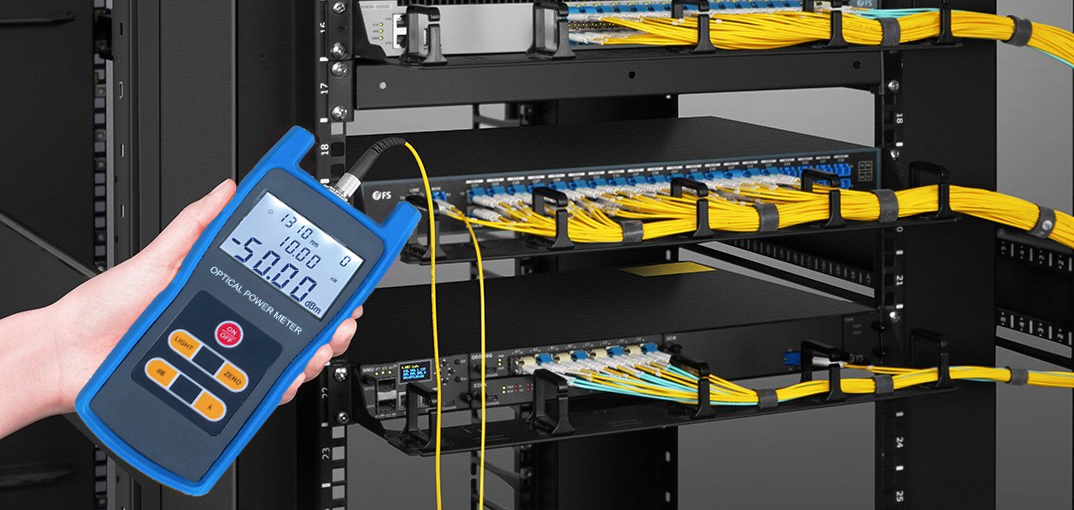The optical fibre diameter analyser provides precise measurements for fibre optics.
The optical fibre diameter analyser provides precise measurements for fibre optics.
Blog Article
The Duty of Optical Fiber Screening in Ensuring Quality and Effectiveness in Connectivity Solutions
In today's quickly evolving electronic landscape, the significance of optical fiber testing can not be overemphasized, as it serves as a keystone for making sure the quality and performance of connectivity options. As technology proceeds to advance, the future of optical fiber screening positions fascinating difficulties and possibilities that merit closer exam.
Significance of Optical Fiber Screening
The significance of optical fiber testing can not be overemphasized in ensuring the stability and efficiency of communication networks. As the foundation of modern telecommunications, optical fibers facilitate high-speed information transmission, making their reliability critical to operational success. Examining works as an aggressive step to recognize potential concerns such as signal loss, attenuation, and physical damages, which can compromise network efficiency.
Regular screening enables the verification of installment high quality and the discovery of issues that could impact information honesty - fibre testing equipment. By using strenuous testing procedures, network drivers can minimize the threats associated with network failures, including downtime and monetary losses. In addition, optical fibre testing guarantees compliance with market requirements and guidelines, boosting the total quality of solution provided to end-users.
Ultimately, the organized assessment of optical fibers contributes to the durability and performance of communication systems. It enables stakeholders to make enlightened decisions concerning upkeep, upgrades, and troubleshooting. In a landscape where information is progressively crucial, focusing on optical fibre testing is vital to sustaining durable and effective connection solutions, thus supporting the demands of modern digital settings.
Kinds Of Optical Fibre Examinations
Various screening techniques are employed to make sure the functionality and dependability of optical fibres within interaction networks. These examinations can be extensively classified into two major types: installation tests and upkeep examinations.
Setup examinations are conducted immediately after the installation of optical fibre cables to confirm their efficiency and integrity - fibre testing equipment. One of the most typical setup tests consist of Optical Time-Domain Reflectometry (OTDR) examinations, which evaluate the high quality of the fibre by determining faults or breaks, and end-to-end loss tests, which determine the overall optical loss from one end of the fibre to the other
Maintenance examinations, on the various other hand, are performed occasionally to guarantee recurring performance and detect potential problems with time. These include aesthetic examination, which look for physical damages or inappropriate installments, and connection tests, which validate that the signal can go through the fibre without disruption.
Furthermore, advanced examinations such as Polarization Mode Dispersion (PMD) and Chromatic Diffusion (CD) examinations can be conducted to examine the fiber's efficiency under numerous problems. By employing these diverse testing methods, professionals can preserve high standards of quality and reliability in optical fibre networks.
Advantages of Regular Testing
Normal testing of optical fibres plays an important function in maintaining you can try here the total performance and dependability of communication networks. By conducting routine assessments, companies can ensure that their fibre optic installments fulfill sector criteria and run effectively. This aggressive approach helps to determine potential weak points and deterioration gradually, permitting for timely interventions before problems escalate.

Cost-effectiveness is one more benefit. By dealing with minor issues early, companies can prevent the high prices related to major repair work or system failings. Normal testing additionally promotes compliance with regulative requirements, guaranteeing that the network sticks to essential security and performance standards.
Common Concerns Recognized
Recognizing usual concerns in optical fiber networks is crucial for preserving optimum efficiency and reliability. Different elements can contribute to disturbances, consisting of physical damage, inadequate installation practices, and ecological impacts.
Physical damages, such as bends, breaks, or abrasions, can significantly break down signal quality. Improper setup strategies, including excessive tension or inadequate protecting of cables, may lead to raised attenuation and loss of connection. Additionally, ecological aspects such as temperature variations, hop over to these guys dampness access, and rodent disturbance can jeopardize the honesty of the fiber.
Adapter issues likewise frequently develop, with improper alignment or contamination bring about increased insertion loss. Splicing errors can introduce considerable signal deterioration if not performed with accuracy.

Addressing these common issues with normal optical fibre screening not just improves network reliability however additionally maximizes total efficiency, ensuring that connectivity remedies remain robust and effective.
Future Patterns in Testing
As the demand for high-speed connectivity continues to rise, the future of optical fibre screening will significantly concentrate on automation and advanced analytics. The combination of expert system (AI) and artificial this content intelligence (ML) in screening processes will make it possible for more reliable information analysis and predictive maintenance, minimizing downtime and enhancing total network reliability. Automated screening options will certainly enhance the inspection and accreditation of fiber networks, minimizing human mistake and boosting testing throughput.
One more substantial fad is the fostering of remote testing modern technologies. As the release of fiber networks increases into remote and underserved locations, remote testing abilities will certainly enable technicians to keep track of and detect network problems without physical visibility, thereby reducing functional prices and enhancing feedback times.
Furthermore, there will certainly be a shift towards even more comprehensive testing criteria that include not just standard loss dimensions but likewise efficiency metrics such as latency and transmission capacity usage. This alternative method will help with better network monitoring and optimization approaches.
As these trends evolve, the optical fiber screening landscape will not just boost the top quality and effectiveness of connectivity services but additionally sustain the growing intricacies of modern communication networks.
Verdict
In verdict, optical fibre testing offers as an essential part in preserving the stability and performance of interaction networks. The recurring commitment to normal screening not only improves data transmission but also aligns with industry requirements, fostering integrity in network infrastructures.
Report this page